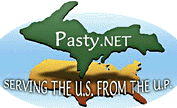Quote:"The Houghton central office had 4,000 lines – from number 1 up to number 4,000. If your phone number was, for example, Houghton 2855 - that was your line (jack) on the switchboard…2855.
On lines with up to four parties (common in those days), everyone on the line had the same number – followed by a party line letter of either J, M, R or W. The party line letter told the operator which ringing key to use and how many “rings” were needed. “J”= 1 ring; “R” = 2 rings. Ringing on the opposite side of the line used “M” = 1 ring; “W” = 2 rings. Therefore, if you see phone numbers like 185-J, 185-M, 185-R and 185-W, you know they are all on the same party line.
There were a few rural multi-party lines still in use in the Range towns back then. Like four party service, everyone on the line had the same number but with a different party line letter + ring numbers at the end. Here is how a Trimountain rural line looked in June of 1962:
[For example, for] Line number 2580:
Party 1 2580-J1 = 1 ring
Party 2 2580-J2 = 2 rings
Party 3 2580-J3 = 3 rings
Party 4 2580-J4 = 4 rings
Party 5 2580-R-1-1 = 1 long + 1 short rings
Party 6 2580-M1 = 1 ring
Party 7 2580-M2 = 2 rings
Party 8 2580-M3 = 3 rings
Party 9 2580-M4 = 4 rings
Party 10 2580-W-1-1 = 1 long + 1 short rings
NOTE: Multiple rings like “W11” are “W-1-1” & not “W-eleven”.""
The two wires connected to your phone were called 


